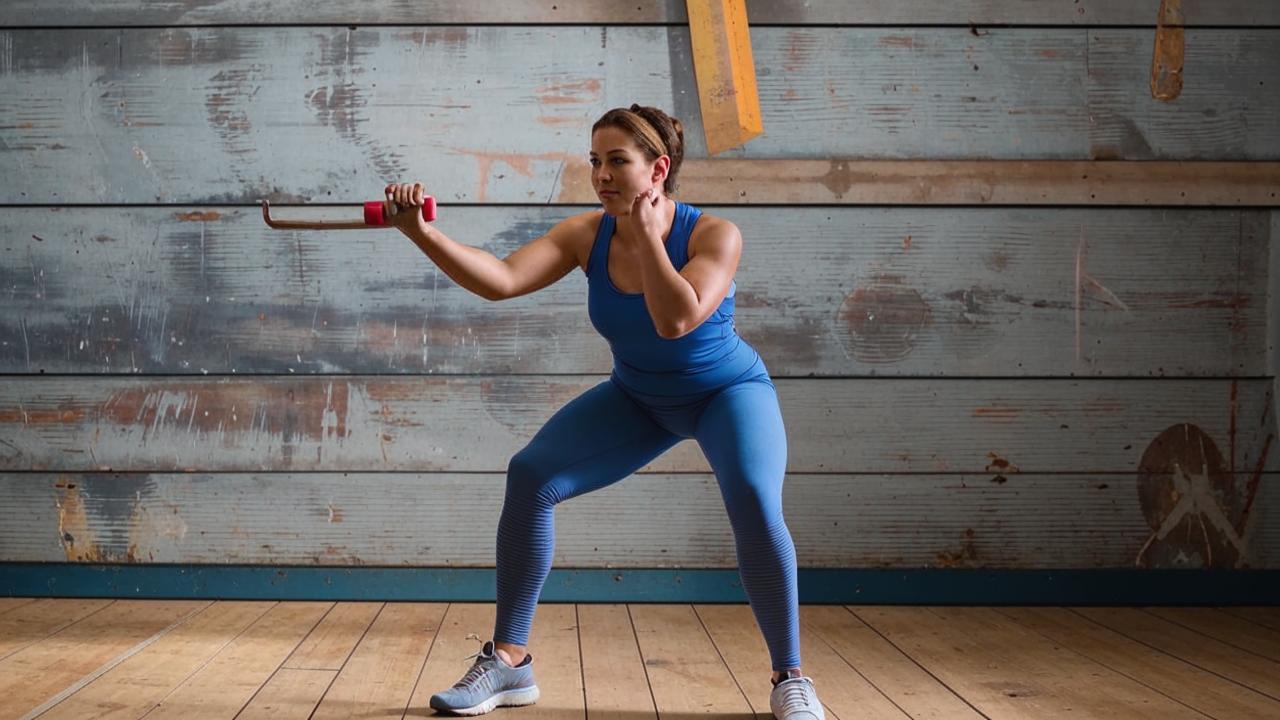How much can you pump up the buttocks of a girl? Trainer’s tips and exercises

Prepared for you two complexes – for home and for the gym.
Fitnesstrainer
“To pump up the gluteal muscles, it is important to include in the training program movements aimed at performing the main functions of these muscles – hip extension, torso straightening, hip extension and outward rotation. There are several effective exercises to work on the glutes: standing pull, Romanian pull on one or two legs, gluteal bridge, Bulgarian lunges, cube step-ups, leg curls and squats. Performing these exercises will help in improving muscle tone and forming a harmonious rounded shape of the buttocks.”
What to know
What’s important to know before working out?
The tightness and shape of your buttocks after training depends on many factors. Some of them affect more and some less. We recommend paying attention to each one to maximize results.
- The frequency of buttocks workouts depends on your type of exercise. If you prefer to train with the fullbody system – the whole body at once, you need 2-3 sessions per week. If you train on a split system – specific muscle groups, then 1-2 sessions per week.
- Gluteal muscles should have 12 to 20 approaches per week. In this case, it is important that the last repetitions are close to the limit, but do not reach complete failure without observing the technique.
- For an effective workout, work with adequate weight. Alternate strength training with muscle mass training. Strength training is 80-85% of your maximum weight per repetition for 4-6 reps. Muscle mass training – 70-75% of your single-rep max for 8-12 reps.
- Perform multi-joint and single-joint exercises. The former allow you to work with heavy weights, while the latter help to work the glutes in a precise manner
- For muscle recovery after exercise, you need to rest from 48 to 72 hours. The lighter the load was, the shorter the rest period. It is also important to get enough sleep, as lack of sleep has a negative effect on muscle growth.
- It is important to consume enough calories and maintain a balance of proteins, fats and carbohydrates. It is recommended to eat daily from 1.6 to 2.2 g of protein per 1 kg of weight and 0.8 to 1.5 g of fats. Carbohydrates should make up the rest of the calories, acting as the main source of energy. For the most efficient muscle gain, a calorie surplus must be created.
- The shape and volume of muscles is determined by genetics. The figure depends on the ratio of hormones, anatomical features, type of muscle fibers and other factors.
- Concentration on exercise technique helps to perform the exercise correctly and engage the gluteal muscles more strongly. Improper technique results in the target muscles not getting the proper load. A burning sensation and tension in the muscles is not a guarantee of sufficient load for their growth.
How much can you pump up the buttocks?
With a competent training program, a balanced diet, quality rest and proper technique, the first results can be seen after a few weeks.
Noticeable results in the form of volumes and roundness can already appear after 3-6 months of regular training. The rate of muscle growth depends on many factors. According to a study, athletes with training experience were able to add just over one kilogram of muscle mass in eight weeks, while beginners gained the same volume faster.
If you want a dramatic change in your figure, however, it may take several years of training. It’s important to have realistic expectations and remember that everyone’s time frame is different. Some will get faster and some will take longer.
Glute exercises in the gym
Romanian single leg pull with a dumbbell
Technique:
- Stand up straight with a straight back and a slight bend in the lower back. Lower your shoulder blades down and bring them together and bring your chest slightly forward. Keep your gaze straight ahead.
- Take a dumbbell in your right hand. Next, shift your body weight onto your right leg and bend it slightly at the knee. Take your left leg back and place it on the toe.
- As you inhale, bend at the hip joint, tilting the body forward and pulling the pelvis back. The lower you bend the straight body forward, the stronger the load on the gluteal muscles will be.
- As you exhale, straighten your torso back to the starting position, bending at the hip joint.
- Keep your lower back straight, control your pelvis, tense your abs and make sure that your knee does not fall inward and your foot is strictly under your knee.
Do the exercise for three sets of 15 repetitions. It is recommended to pause for rest between sets – from 60 to 90 seconds. You can use a dumbbell or barbell to make the exercise more difficult.
Reverse lunges with a barbell
Technique:
- Stand up straight with a straight back and a slight bend in your lower back. Lower your shoulder blades down and bring them together, and bring your chest slightly forward. Keep your gaze straight ahead. Place the barbell on the trapezius muscles, holding it firmly with your hands;
- shift your body weight onto your left leg and bring your right leg back. As you inhale, slowly lower yourself down, pulling your pelvis back and bending at the knee to a 90-degree angle. It is important to tilt the body forward to stretch the gluteal muscles;
- as you exhale, straighten your torso by returning the body to the starting position by extending the leg at the knee joint;
- keep your lower back straight, control your pelvis, tense your abs and make sure that your knee does not fall inwards and your foot is strictly under your knee.
Do the exercise for three sets of 15 repetitions. It is recommended to pause for rest between sets – from 60 to 90 seconds.
Crossover leg curl
Technique:
- Approach the exercise machine and put a special cuff on the ankle of the right foot. Lower the cable block down and fasten the carabiner behind the cuff;
- stand up straight to the simulator with a straight back and a slight bend in the lower back. Lower your shoulder blades down and bring them together and bring your chest slightly forward. Keep your gaze straight ahead;
- shift your body weight onto your left leg and bring your right leg forward so that the cable provides weight. Next, lean forward so that your body is parallel to the floor;
- as you exhale, drive the hip of the right leg backward with a slight outward rotation. Hold at the top for one second. It is important to avoid strong tension in the lower back;
- as you inhale, bring the hip back to the starting position. Control your pelvis, tense your abs.
Do the exercise for three sets of 15 repetitions. It is recommended to pause for rest between sets – from 60 to 90 seconds.

Gluteal bridge with a dumbbell
Technique:
- Lie with your back on the mat. Bend both legs at the knees and place the feet close to the buttocks. It is important that the foot and the knee joint are strictly under each other;
- place a dumbbell or any other weight on your lower abs and control the weight with your hands;
- Exhale and extend your hips, lifting your pelvis up to a straight line with your back. Hold in the upper position for one second;
- then on the inhalation smoothly and under control lower the pelvis to the starting position on the floor for one or two seconds;
- keep your lower back straight throughout the exercise, trying to avoid strong flexion in the lumbar spine. Control your pelvis and tense your abs.
Do the exercise for three sets of 15 repetitions. We recommend pausing for rest between sets – 60 to 90 seconds.

Exercises for the buttocks at home
Squats
Technique:
- Stand up straight with a straight back and a slight bend in the lower back. Lower your shoulder blades down and bring them together, and bring your chest slightly forward. Keep your gaze straight ahead;
- feet slightly wider than shoulder width apart and toes apart. As you inhale, slowly lower yourself down by pulling your pelvis back and bending at the knees until your thighs are parallel to the floor or lower;
- it is important to tilt the body forward during the squat to shift the load to the gluteal muscles. This is how the exercise becomes pelvic-dominant. The knees should move in the direction of the feet;
- as you exhale, straighten your hips and knees to the starting position. Keep your lower back straight throughout the exercise. Make sure your knees do not fall inward.
Do the exercise for three sets of 15 repetitions. It is recommended to pause for rest between sets – 60 to 90 seconds. You can use additional weights to make the exercise harder.

Bulgarian lunges
Technique:
- Stand up straight with a straight back and a slight bend in your lower back. Lower your shoulder blades down and bring them together, and bring your chest slightly forward. Keep your gaze straight ahead;
- shift your body weight onto your left leg, and put your right leg back on the couch or stool. As you inhale, slowly lower yourself down, pulling your pelvis back and bending at the knee to a 90-degree angle. It is important to tilt the body forward to stretch the gluteal muscles;
- as you exhale, straighten your torso by bringing your body back to the starting position by extending your leg at the knee joint;
- keep your lower back straight and control your pelvis. Also tense your abs to keep your balance. Make sure that the knee does not collapse inward and the foot is strictly under the knee.
Do the exercise for three sets of 10 repetitions. We recommend a rest pause between sets – 60 to 90 seconds. You can use equipment to make the exercise more difficult.

Gluteal bridge on one leg
Technique:
- Lie with your back on a mat. Bend your left leg at the knee and place your foot close to your buttocks, and place your right foot on the thigh of your left leg. It is important that the foot and knee joint of the left leg are strictly under each other throughout the exercise;
- begin to exhale with the left leg to extend the hip, lifting the pelvis up to a straight line with the back. Hold in the upper position for one second;
- then on the inhalation smoothly and under control lower the pelvis to the starting position on the floor for one or two seconds;
- keep your lower back straight throughout the exercise, trying to avoid strong flexion in the lumbar spine. Control your pelvis and tense your abs.
Do the exercise for three sets of 15 repetitions. We recommend pausing to rest between sets – 60 to 90 seconds. You can use a dumbbell or barbell to make the exercise more difficult.








